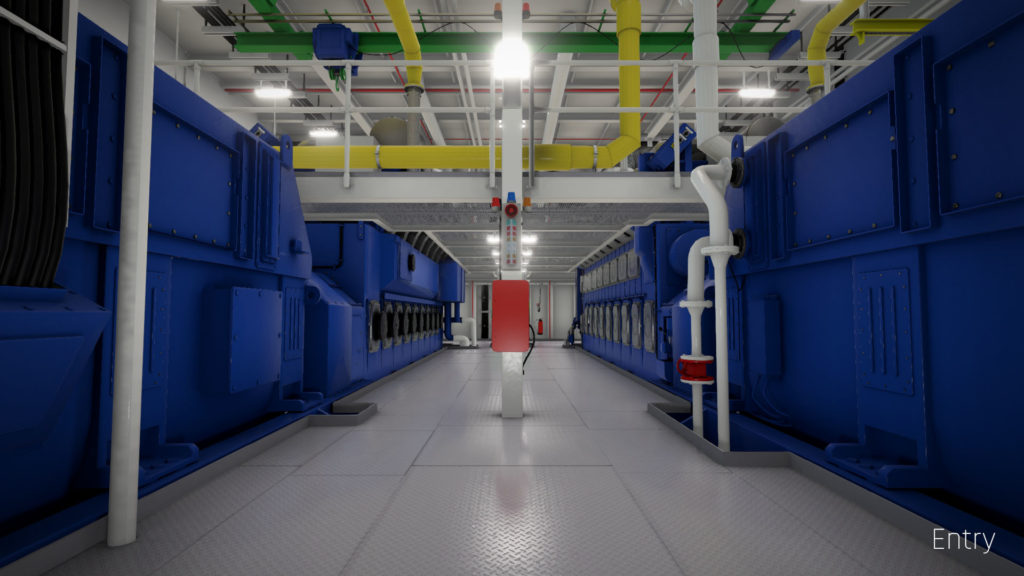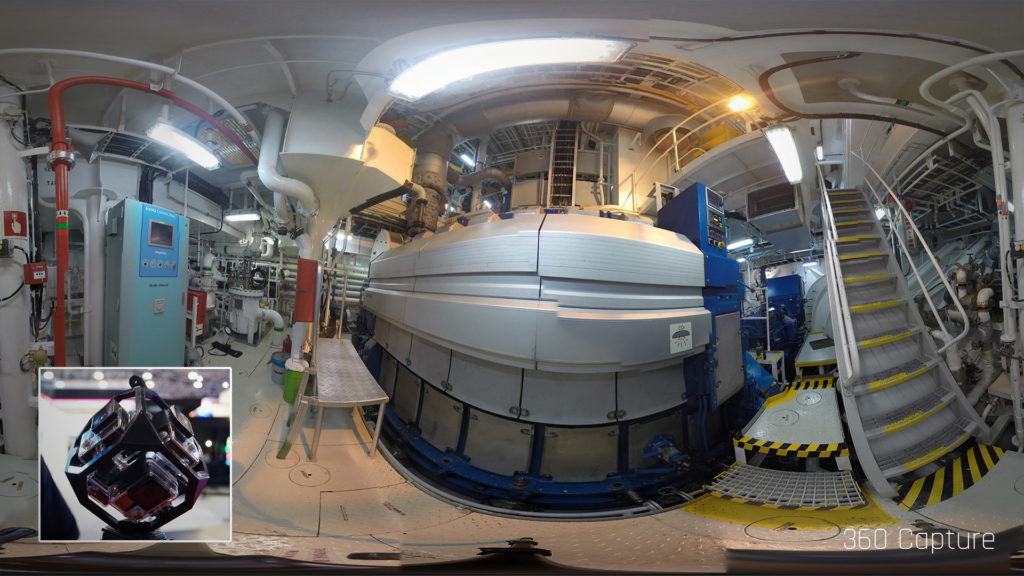Virtual Reality is a great medium to mimic real-life environments and situations for training and introductional purposes. The LNG Experience is one of those examples.
LNG stands for ‘Liquid Natural Gas’ and is getting more and more common in the shipping industry. To help students familiarize themselves with the specifics and properties of this system, I developed this project with my former team, which is now used in an educational environment. The main benefit is an ever present location, since LNG ships still aren’t that common and expensive to dock for training purposes, and the ability to make mistakes which would otherwise be catastrophic.
To get a better understanding of how things look and work inside an engineroom we were invited to visit a real LNG ship, on which we had just one hour to gather as much information and reference material as we could. Using a 360 camera rig we were able to capture large areas at once, which could later be used to ‘revisit’ the ship and take a second look at things.
Since the client is an educational institute, the theory and didactical properties were already available. The first step after data collection was to block out a greybox of the environment; a simplified version in which changes can be easily made while still maintaining the overall scope.
The result of this is a lifelike LNG engineroom with all the components and systems in place. The next step was the implementation of the educational modules.
We build a platform on which several tasks and processes could be added. By starting in a ‘menu’ environment, the user has the overview on which module is next, and can see in a summary what it is about. The user is then put into the engine room where a taskslist appears and tools can be used to accomplish said tasks. All this can be controller by a Instructor application, with which an overview of all current tasks, as well as the users position and timing can be monitored realtime.
One of the benefits of VR is the ability to provide visual information of otherwise hidden objects or properties. By writing a special dissolve shader we could remove certain parts and give an extended view of components which would otherwise be hidden while operational.





